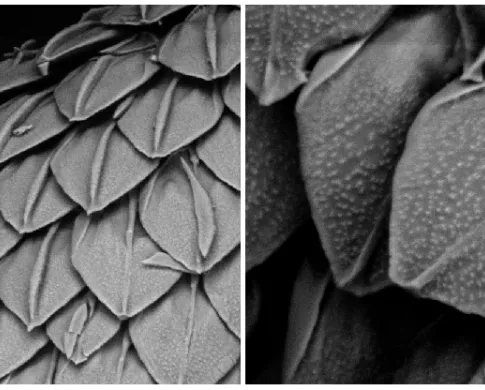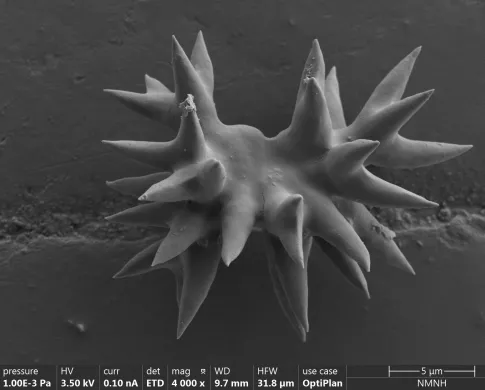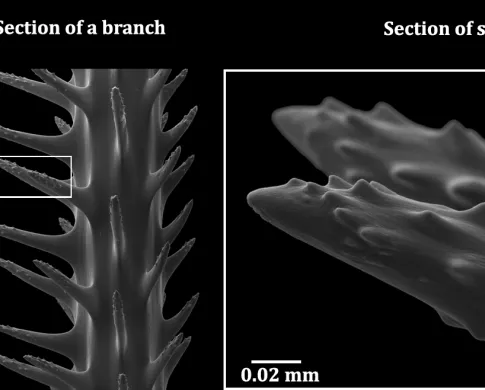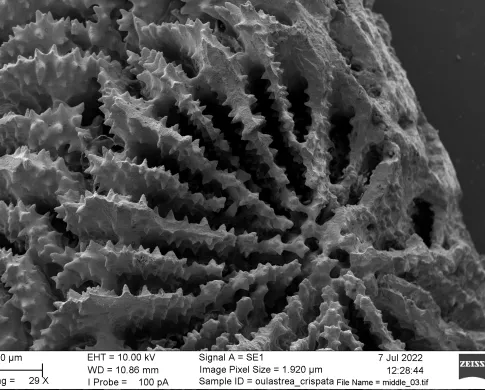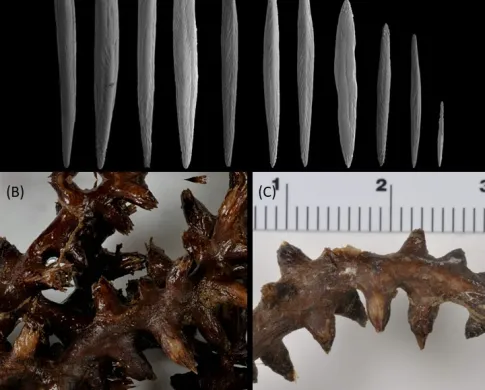Image
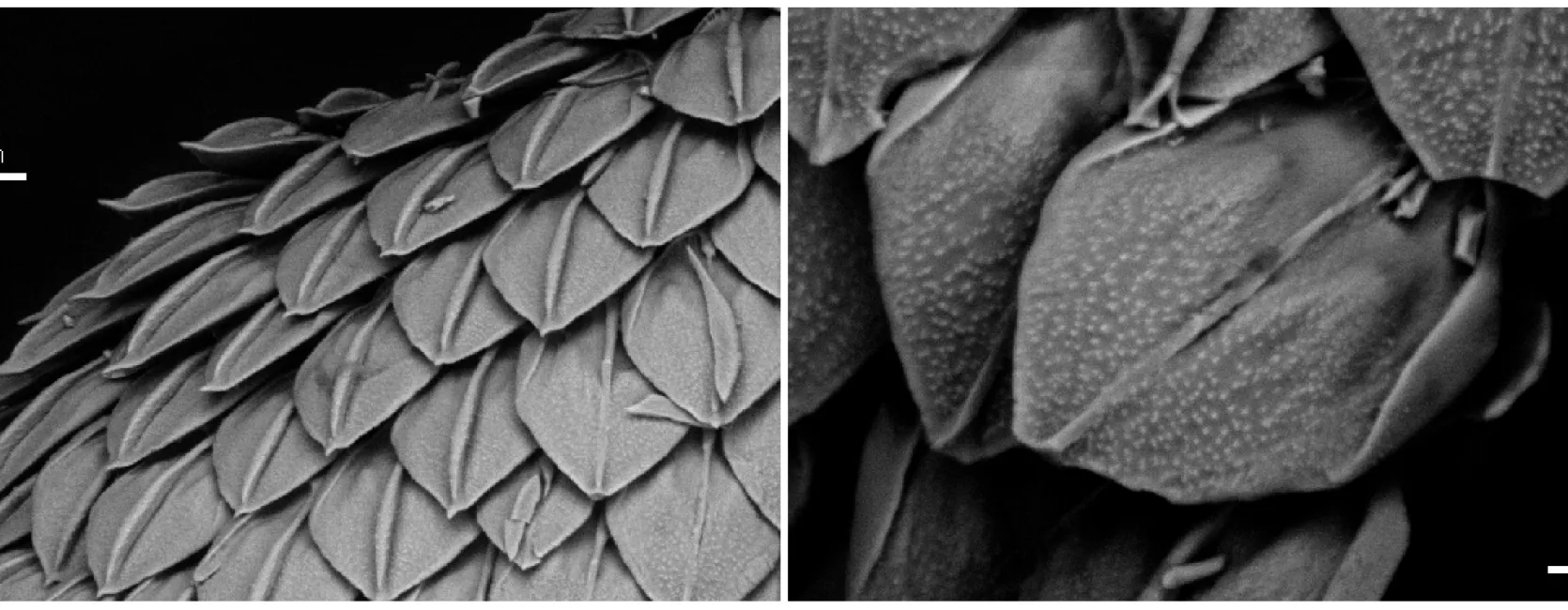

Traditional optical microscopes direct beams of light through a series of lenses to magnify an object, but they are limited to about 1,500X magnification. In taxonomy, the science of identifying and classifying organisms, key morphological traits are sometimes too small to be seen using these instruments. Scanning Electron Microscope (SEM) is a powerful imaging tool that uses electrons instead of light to generate highly detailed images of microscopic structures, beyond what a light microscope can achieve. SEM is especially valuable to observe, measure, and describe some incredibly small and intricately ornamented structures of invertebrates that are crucial for identifying and classifying species.
The Scientific Imaging facilities at the National Museum of Natural History house two SEM microscopes. In the context of the MDBC project scientists have been using these microscopes to study calcareous sclerites, which are mineralized structures found in certain animals like sponges, corals, and mollusks. These structures are essential for identifying species of bamboo corals, black corals, sponges, and solenogasters (shown below).
